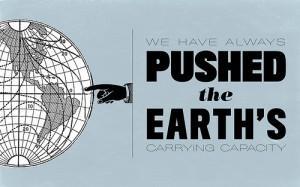 A few of our previous op-ed pieces have touched on keys to sustainability (including resilience and durability) and where sustainability is today. Often sustainability is conflated with the “green” movement. However, rarely does anyone discuss weak vs. strong sustainability. The former is largely where we are today, substituting human capital for natural. One could argue that the latter (strong sustainability) is the direction we need to take. Unfortunately, there appears to be a missing component to this discussion: carrying capacity.
A few of our previous op-ed pieces have touched on keys to sustainability (including resilience and durability) and where sustainability is today. Often sustainability is conflated with the “green” movement. However, rarely does anyone discuss weak vs. strong sustainability. The former is largely where we are today, substituting human capital for natural. One could argue that the latter (strong sustainability) is the direction we need to take. Unfortunately, there appears to be a missing component to this discussion: carrying capacity.
There are two types of carrying capacity: cultural carrying capacity and ecological carrying capacity. Professor Garrett Hardin states that cultural carrying capacity “is inversely related to the (material) quality of life presumed.” In other words, the number of people that can be supported in a given area depends on the rate of consumption. The higher the rate, the lower the cultural carrying capacity. On the other hand, ecological carrying capacity more generally refers to the “maximum number of individuals that a given environment can support without detrimental effects.” People and how they consume resources are more closely tied to the number of individuals that can be supported. It’s up to us to determine how much we consume (cultural carrying capacity). However, we cannot alter the (ecological) carrying capacity of the earth. Technology only temporarily changes the number of people we can feed and the amount of energy available.
In order to live sustainably, we cannot outstrip our resources. Consuming at a rate faster than supplies are replenished ensures eventual collapse. Although many people try to put a number on the ecological carrying capacity of earth, it is much more reasonable to think about our role and cultural carrying capacity; for that is under our control. If the population continues to grow, just as we approach and blow past person 7 billion (check the counter on National Geographic’s site), how we consume will be the major issue. It is not known how many people the earth can support, but a few online calculators can help one figure out their ecological footprint. The footprint is measured in the number of earths it would take to sustain the entire world population if we everyone consumed like the person answering the questions.
[Image source]

